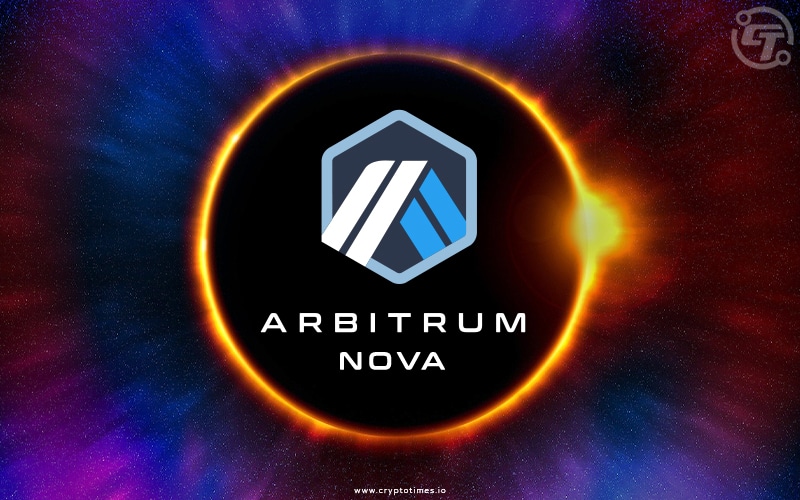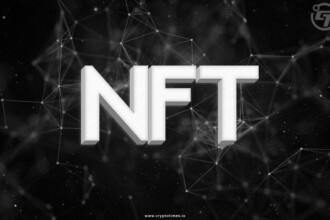After the successful launch of AnyTrust chains, Offchain Labs, the company behind the Ethereum-scaling project is introducing its new chain ‘Arbitrum Nova’ built on AnyTrust technology.
Arbiturm Nova marks a long-anticipated upgrade to the Ethereum public mainnet and is open for developers to deploy their apps. With this transformative update, Offchain Labs now has two separate Arbitrum chains running live on mainnet that together can support just about every blockchain utility and use case.
In this article, we would know what it’s about, and what the added advantages of Arbitrum Nova are based on AnyTrust technology.
What is Arbitrum Nova?
Arbitrum Nova is an entirely new chain built on AnyTrust technology by Offchain Labs with a different set of assumptions and is designed for social applications, gaming, and more cost-sensitive use cases.
Arbitrum Nova is now live on mainnet, open for developers to deploy their apps ahead of the upcoming launch to end users. Nova is analogous to Arbitrum One, which is a chain built using the Arbitrum Rollup technology.
If you are wondering what AnyTrust Technology is, then let us define it in simple words. AnyTrust Technology is the newest development that operates in Arbitrum mode for ultra-low-cost transactions with strong security guarantees. Since it is the first chain built on the AnyTrust technology, the chain is called Arbitrum Nova.
When the network opens to users, all developers will have equal access to Nova and will be able to have their apps live and ready. Developers can request access here to start deploying new projects and in the next stage users also can enjoy the full-fledged Arbitrum Nova.
The new chain will be opening up to users after at least 2 weeks to speculate on the performance at the same time giving developers time to onboard while Nova is permission-only.
Arbitrum Nova has a chain ID of 0xa4ba (decimal: 42170) and other relevant resources would be rolled out in the coming weeks.
What is the role of Arbitrum Nova?
Arbitrum Nova is a perfect solution for projects with cost-sensitive, high transaction volume expectations. For instance, games that frequently launch social projects or mint new items and currency with many different levers for on-chain interaction can highly benefit from Nova.
As these projects grow in size, the need to reduce transaction costs becomes a primary goal. Nova is essentially a chain that supports the kind of growth and development such projects expect.
How would Arbitrum Nova be launched?
Arbitrum Nova is a big step forward for everyone in the Ethereum and Arbritrum communities. Nova will be the solution of choice for social applications and gaming. Simultaneously, Arbitrum One will continue to be the home for many NFT projects and DeFi.
As of now, Arbitrum Nova is accessible for developers while users will be allowed to access it after 2 weeks of developers’ onboarding. The fair launch of this chain will also include projects that are ready to deploy a custom token to Nova.
Once the chain opens to the public, users will be able to deposit their tokens using the general bridge interface.
This could lead to ambiguity for some projects who would otherwise invoke special functionality when their tokens are bridged (which can lead to increased supply on Nova etc)
For such projects, it is suggested to prevent token deposits until custom bridging functionality is added. Developers who want to prevent deposits on general bridge web interfaces can inform the company within the developer-only period under this form.
How is Nova different from Arbitrum One?
The key difference between Nova & Arbitrum One is that Arbitrum One puts all transaction data on Ethereum all the time, whereas Nova makes use of a Data Availability committee. In this way, Nova achieves significant cost savings by first sending the data to the committee & only falls back to putting data on-chain in case the committee fails to do its job.
Nova is fully EVM compatible and is built on top of AnyTrust technology, on the other hand, Arbitrum One is built on optimistic rollup technology. Once Arbitrum One migrates to Nitro, both chains will feel and operate exactly the same.
As for how the chains operate, there are two key differences as mentioned below:
- Arbitrum Nova requires minimal trust assumption in the process of handling transaction data – specifically an assumption that at least two committee members are honest.
Rather than sequencer batching and posting all calldata to L1, it shares data with the committee. Consequently, the committee then signs Data Availability certificates (a.k.a. DACerts) for batches of transactions. Only certs are posted to L1, which has much smaller storage requirements on the base layer.
To keep data accessible, the committee runs Data Availability Servers to expose a REST API that allows data batches to be fetched by hash.
- On the developers’ front, this key difference is what makes the technology more advanced. As a result of using the DAC, transactions on Nova will have significantly lower transaction fees compared to Arbitrum One.
While Arbitrum One is already up to 97% cheaper than Ethereum for varieties of transactions, Nova will be significantly more cost efficient.
What’s next?
With the launch of a new chain, Offchain Labs has opened the doors for developers and the next big Nova milestone will be opening Nova up to all the users. Before that happens, the company will ensure chain stability and foster a robust ecosystem.
In the coming weeks, the public rollout of Nova is anticipated and more information will be disclosed about the Data Availability committee and initial members. Meanwhile, the company is consistently onboarding teams to Arbitrum One and helping projects prepare for Nitro.
For the developers’ community focused on Arbitrum One, the Arbitrum Nitro migration is on a roll and is approaching completion. The last testing before the completion happens on mainnet and it will be migrating the Arbitrum Rinkeby testnet to Nitro.
Well, all this will take time but Offchain Labs is planning on developing a new Nitro-based Arbitrum Goerli testnet to serve as the long-term Arbitrum testnet.
The developers community can expect these changes in a follow-up post in the days ahead, while Arbitrum Nova matures to incorporate new improvements that are expected to bring costs down even further.







